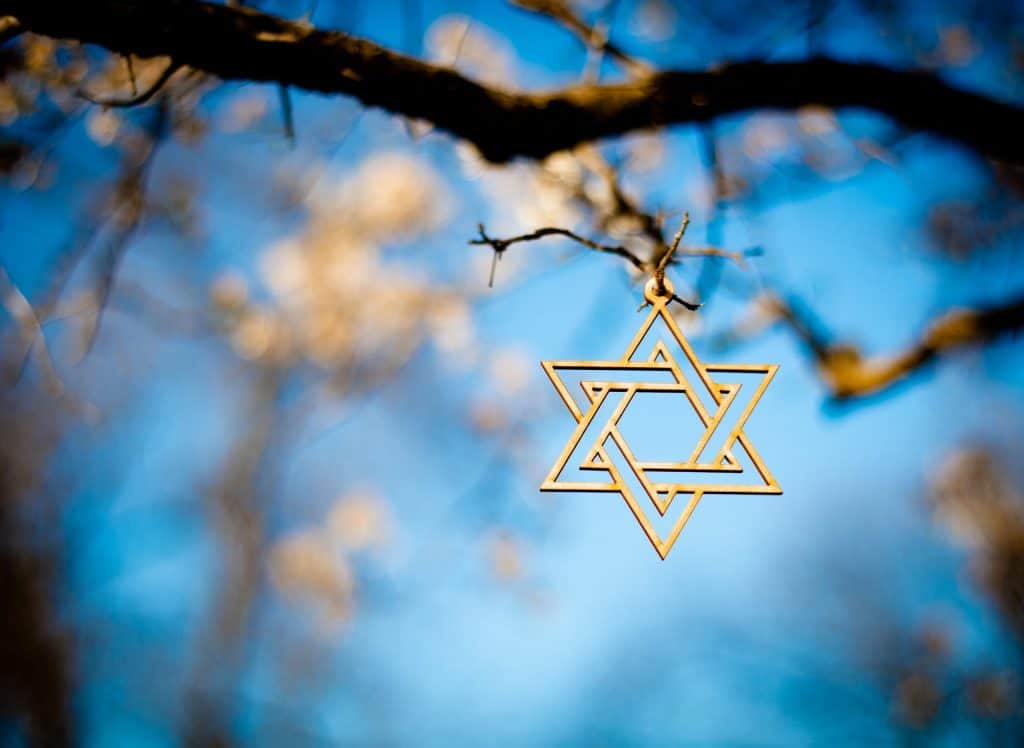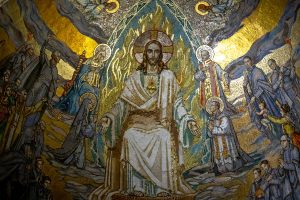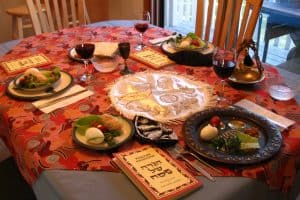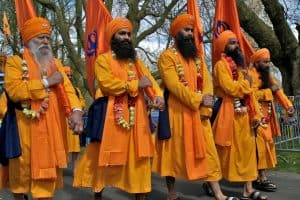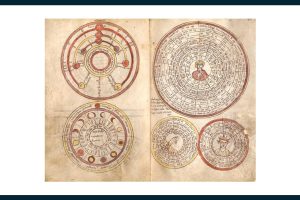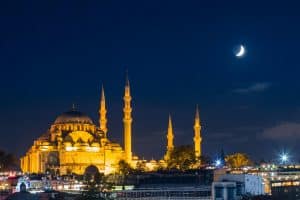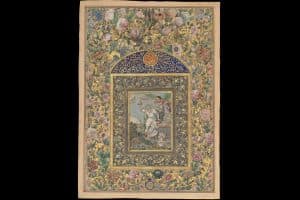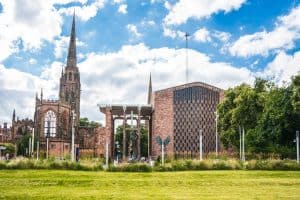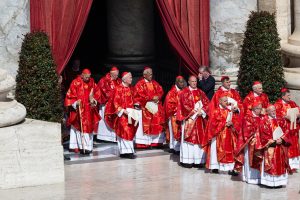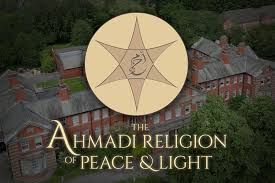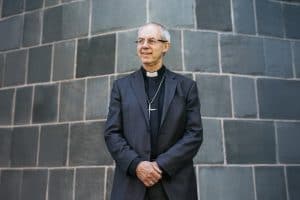By Sarah Harvey
Judaism is the first and oldest of the world’s Abrahamic religions, but it also the smallest with 15 million adherents globally. Originating in the Middle East thousands of years ago, Jews and their distinctive culture and faith are now found all over the world
Key facts
Judaism is the first of the Abrahamic religions, the other two being Christianity and Islam. Jews believe in one God, and that they are the chosen people with whom God has made a covenant, through the patriarch Abraham. Jewish people seek to keep God’s laws and bring holiness into every aspect of their lives.
The Jewish population across the globe is relatively small, compared with the other Abrahamic religions. It is estimated that there are about 15 million Jews globally (0.2 per cent of the population), the highest concentrations of which are in the United States and Israel.
History of Judaism
The history of Judaism is closely tied to the Hebrew Scriptures, called the Tanakh (sometimes referred to by Christians as the Old Testament).
This contains 31 separate books including the Torah, which is considered the oldest and most authoritative. The Torah is made up of five volumes — Genesis, Exodus, Leviticus, Numbers and Deuteronomy. It is from the Torah that the Halakha, the 613 laws covering temple rituals, festivals, family and social relationships, commercial practice and more, are derived.
The Talmud, which is extensive commentary on Jewish history and laws, by rabbinical scholars is also a revered text.
The Torah recounts the early history of Judaism. It tells how Abraham entered into a covenant with God in which he gave to Abraham the land of Canaan (believed by the Jews to be modern-day Israel). In return, Abraham and his tribe, previously believed to have practised polytheism, acknowledged God as their only God.
The Torah traces the ancestors of Abraham, usually referred to as Hebrews, including Abraham’s grandson Jacob who had 12 sons, to Egypt where they migrated because of famine. It was in Egypt that the Hebrews were persecuted and eventually enslaved.
Moses was told by God to lead the Hebrews out of Egypt. With the help of his brother Aaron, Moses led the Hebrews from Egypt to the Sinai desert where a new covenant was created in which God gave the Ten Commandments and other laws to the Hebrews. Some view this as the beginning of the Jewish religion.
Eventually, the Hebrews reached and conquered Canaan, the land that God had promised to their ancestor Abraham. The land was expected to provide a prosperous and blessed future for the Hebrews after their enslavement and exodus in the desert but instead was ravaged by wars, social corruption and division. The concept of a coming Messiah developed at this time.
Jerusalem became the centre for Jewish worship and, in the 10th century BCE, Solomon, the third and final King of Israel of the Davidic dynasty, built a temple for worship of God in Jerusalem. The temple included an inner sanctum that contained the Ark of the Covenant, the symbol of the Hebrews’ covenant with God. However, the temple was destroyed, and the Ark captured.
The temple was rebuilt in the fifth century BCE and became known as the Second Temple. The Second Temple was destroyed by the Romans in 70 CE. This forced a change in the practice of Judaism. No longer able to carry out rituals in a central temple, rabbis took on the role of interpreting the Torah and writing commentaries on its laws that would become the Talmud.
Synagogues were established where Jewish people, now spreading throughout the Middle East, could worship and pray for the coming of the Messiah and the rebuilding of the Temple.
How do Jews practise their faith?
Judaism is not a proselytising religion, and traditionally you cannot convert to the religion. Instead, the Jewish identity is passed from mother to child. However, there are some Jewish communities that accept converts, particularly reformed ones (although it would still be a lengthy conversion process).
Jewish identity is not just a religious one but is also considered to be ethnic and cultural. Hence, people can identify as non-religious or secular Jews.
Worship takes place in a synagogue and is led by a rabbi, a central part of which is the reading of the Torah from a sacred scroll (Sefer Torah). Prayer and learning, specifically study of the Torah, are central to religious life.
The Jewish calendar operates on the lunar cycle and dating begins from the creation of Adam. 2020 is the Jewish year 5781. The weekly Shabbat, or Sabbath, a day of rest in commemoration for the day of rest that God took after creating the Earth, starts at sunset on Friday and ends at sunset on Saturday.
Annual festivals include Pesach (Passover), which is celebrated with Seder feast during which the Haggadah or “telling the story” is recited in remembrance of the exodus of the Israelites from Egypt. There is also Rosh Hashana (new year), Yom Kippur (Day of Atonement), Hanukkah/Chanukah and Purim.
The life of a Jewish person can vary greatly from that of another, according to denomination, culture, region and personal beliefs, yet there are several practices that many Jewish people carry out to mark rites of passage in the life cycle.
The life cycle
Birth: eight days after birth, boys are circumcised in a religious ceremony (bris) performed by a mohel. The first circumcision was done after Abraham made the covenant with God and the practice is carried on today as a symbol of that promise.
Puberty: at 12 or 13 years old, boys celebrate a bar mitzvah and (for recent generations) girls a bat mitzvah. The ceremony, often followed by a party, marks a coming of age and means they are now responsible members of the community.
Marriage: the marriage ceremony can vary but it usually includes the recitation of vows under a chuppah (a kind of canopy made of cloth) and a blessing for the new couple. Divorce is permitted with the permission of the rabbi.
Death: burial takes place shortly after death. There follows a period of mourning (shiva) of up to seven days. The Hebrew Scriptures do not have many details of life after death and there is no original doctrine of divine retribution. However, a view of an afterlife with reward (Eden) or punishment (Geihinnom) based on a person’s conduct during life was developed by writers of the Talmud.
Diet and dress
There are strict dietary requirements according to Jewish law. Observant Jews will follow a diet of what is regarded as kosher, which includes not mixing milk and meat, not eating pork or shellfish, and eating meat that has been ritually slaughtered and blessed (a shocet is the title of the person who conducts Jewish ritual slaughter).
In terms of dress, those from within Haredi Orthodox communities are the most distinguishable. Haredi Orthodox women are expected to dress modestly, usually in long skirts, and hats/wigs that cover their hair (once married). Men wear hats and long coats, of which there are cultural variations. Men may have beards as well as pe’ot, or sidelocks — untrimmed hair growing from the temples.
In Orthodox traditions, women and men often cover their heads when visiting a synagogue or while at prayer. Men may wear a kippah, a small head covering; the tallit, a prayer shawl worn over the shoulders; and/or the tefillin, leather straps wound around the arms, ending with a small box on the forehead.
Beth/Beit Din is a court of law guided by halakha to deal mostly with family matters and is usually presided over by a rabbi. Such courts have existed in the UK, such as the London Beth Din of the United Synagogue, for generations. Technically they serve as “mediation tribunals” and do not in any way challenge national law in the UK.
How many Jews are there in the UK?
Europe’s Jewish population is about 1.4 million, and according to the census figures of 2011, there are just over 263,000 Jews in England and Wales (0.4 per cent of the population). The Jewish community in Britain is long-established, with the first written records of Jewish people in Britain dating from the 11th century.
However, they were expelled from England in the 13th century, by royal edict, and returned only in the 17th century. By 1858 British Jews were fully emancipated and able to take part in all aspects of citizen life. Between 1870 and the First World War, the population of British Jews more than tripled, from 40,000 to 130,000, mainly due to Ashkenazi immigration from Eastern Europe.
In 2020, the biggest Jewish communities are in London (particularly Barnet), with substantial populations in Manchester and Gateshead, and smaller populations in parts of Hertfordshire and Essex. While the Jewish population had been in decline for some years, it is now thought to have stabilised. However, in some specific communities, such as the Haredi Orthodox community, there is a higher than average birth rate.
What are the main denominations?
Jewish divisions began to emerge with the spread of Jewish people throughout Europe in the 18th century. Two main divisions emerged — those who sought to modernise and assimilate to their host societies (Reform traditions) and those who sought to remain separate and maintain traditional Judaism (Orthodox traditions).
There are also two main divisions based on historical place of origin: Sephardi (from “Sepharad”, the Hebrew name for Iberia), historically trace their origins to Spain and Portugal; while Ashkenazi (from “Ashkenaz”, the Hebrew name for Rhineland in modern Germany) trace their origins to northern and eastern Europe.
Orthodox
Orthodox is an umbrella term for those who did not modernise and claim direct continuity with early Rabbinic Judaism. In general, halakha (Jewish law) is more closely followed in this tradition and are seen as binding.
Men and women sit separately in the synagogue and women cannot be ordained as rabbis or publicly read the Torah.
Orthodox Judaism is the only officially recognised form of Judaism in Israel. Outside North America, most Jews worldwide are nominally Orthodox even if their beliefs and practices are closer to Reform. In the UK, Orthodox Judaism accounts for just over 50 per cent of all synagogues and affiliated Jewish households.
The United Synagogue is the umbrella grouping of Orthodox synagogues in Britain, formed in 1870. It has 62 affiliated synagogues and headquarters in Finchley, north London. The Chief Rabbi (currently Ephraim Mirvis) is the leader of Orthodox Jews in Britain.
Haredi or Ultra-Orthodox
The term Haredi (sometimes spelt Charedi) is a Modern Hebrew adjective that describes Jews who are uncompromisingly rigorous in their religious practice and can be translated as “the one who trembles before God”.
Haredim (the plural of Haredi) hold that their beliefs and practices go back in an unbroken chain to the giving of the Torah to Moses on Mount Sinai. Therefore they do not accept non-Orthodox Judaism because they see these denominations as breaking the link with divine revelation.
Their beliefs include strict enforcement of the traditional roles of men and women, including dress codes, division of labour and rules of interaction. There are different sub-groups within Haredim, including Hasidic sects who emphasise spirituality and study, and are led by a Rebbe. These include the Belzer, Lubavitch, Satmar and Vishnitzer groups.
In the UK, about 13 per cent of the Jewish population are affiliated to Haredi synagogues. London is home to most Haredi communities, particularly the areas of Stamford Hill, Golders Green, Hendon and Edgware. The Haredi community in general remains insular and there has been governmental concern over a growth in unregistered and unregulated schools.
Reform
Growing out of the ideas of civil liberty and tolerance of the Enlightenment, its founders viewed the traditional Jewish community as out of date and sought to modernise it. There is an emphasis on universalism and acculturation with the “host” society.
It sees the laws as a process, not fixed in time, and so not necessarily binding at all times. It also teaches that men and women do not need to sit separately in synagogue, women can be rabbis, and children are Jewish if they have either a Jewish mother or father.
In the United States, about 35 per cent of synagogues are Reform. In the UK, it is about 20 per cent of synagogues. The Movement for Reform Judaism (MRJ) is the largest umbrella grouping in the UK with 41 synagogues. Its flagship synagogue is the West London Synagogue, led by Rabbi Julia Neuberger.
Conservative or Masorti
Conservative Judaism developed in the 19th century and like Orthodox streams, the denomination believes in the central position of halakha, but they are also prepared to modify it in view of changing social and economic circumstances.
It is the largest single Jewish denomination in the US, with nearly 33 per cent of synagogue allegiance. In Britain their numbers are small (approximately three per cent of synagogue members) but growing faster than other groups aside from the Haredi.
Reconstructionist
Developed in the 20th century as a reappraisal of Judaism in light of contemporary thought and society. The system is participatory with a rabbi serving as a resource instead of leader and all decisions made by consensus.
Secular Judaism
Common among Western Jews living in the 21st century although it has its roots before the Enlightenment.
Secular Judaism refers to those who have Jewish ancestry and would be considered ethnically Jewish but who do not attend worship services and may not actively believe in the tenets of the Jewish religion. They may celebrate Jewish holidays as historical festivals and include customs in events such as marriage and death, because it is family tradition.
Almost half of American Jews describe themselves as “secular”.
Find more detailed information on Judaism in Britain, its denominations and organisations, in this factsheet.
Contemporary issues in Judaism
Antisemitism
Antisemitism (anti-Jewish prejudice) has deep roots in Europe. In 1290, Jews were expelled from Britain by King Edward I. They were also expelled from Spain and Portugal at the end of the 15th century. Their continued persecution eventually led to the creation of ghettos, with the aim of segregating Jewish people from the larger society. The first was built in Venice in 1516. These restrictions were only relaxed as the ideals of the Enlightenment spread throughout Europe in the late 17th century and earlier 18th century.
However, persecution and discrimination never entirely disappeared. In 1933, anti-Jewish legislation was introduced by the new German chancellor, Adolf Hitler. Hitler’s “Final Solution”, which aimed to eliminate all Jewish people, was implemented in 1942 and extermination camps were set up to enslave and kill Jewish people as well as millions of others.
It is believed that the estimated six million Jewish people who were killed made up two-thirds of the European population and one third of the world population of Jews. Remembrance of the Holocaust is an important part of modern-day Jewish identity.
Israel/Zionism
Following the Holocaust, the idea of “returning” Jewish people to the land of Canaan/Israel, as promised by God to Abraham, and creating a Jewish state, became more popular.
The State of Israel was founded in 1948. This culturally diverse region had been governed as part of the Ottoman Empire, but fell to British control after the First World War. After the Second World War and the Holocaust, the United Nations approved establishing an independent Jewish state, an independent Arab state and an internationally governed city of Jerusalem in this area and the British withdrew.
However, from this point onwards, the exact distribution of land and its governance has been a continually contested issue. Many Palestinian people were displaced in the creation of the new state of Israel and there have been numerous wars and blockades between Israel and surrounding nations as well as Israeli occupation of Palestinian territories (namely the West Bank and Gaza).
Zionism is the term given to the political ideology that supported the establishment of a Jewish state in Palestine. Not all Jews are Zionists, and not all Zionists are Jews. Christian Zionists believe that the return of Jews to Israel is a prerequisite for the return of Christ.
Dr Sarah Harvey is senior research officer at Inform, an independent, educational charity based at King’s College London, which provides information about minority religious, spiritual and political movements
Academic experts
Dr Keith Kahn-Harris, senior lecturer at Leo Baeck College and associate lecturer at Birkbeck College
Rabbi Alex Goldberg, dean of the College of Chaplains and co-ordinating chaplain to Surrey University — a rabbi, barrister, and human rights activist
Dr Andrea Schatz, reader in Jewish studies, King’s College London
Dr Ruth Sheldon, lecturer in religion and social science, King’s College London
The Centre for Jewish Studies at Manchester University
The Institute for Jewish Policy Research
Further reading
Cohn-Sherbok, Lavinia, and Dan Cohn-Sherbok (1994). A Short History of Judaism. Oxford: Oneworld
Cohn-Sherbok, Dan (2003). Judaism: History, Belief and Practice. London: Routledge
Engel, David (2009). Zionism. Short Histories of Big Ideas. Harlow: Pearson Education
Goldberg, David J. and John D. Rayner (1989) The Jewish People: Their History and Their Religion. London: Penguin Books
Kahn-Harris, Keith and Ben Gidley (2010). Turbulent Times: The British Jewish Community Today. London: Continuum
Kahn-Harris, Keith (2012). Judaism: All That Matters. John Murray
Shain, Michelle, Shira Fishman, Graham Wright, Shahar Hecht, and Leonard Saxe (2013) “‘DIY’ Judaism: How Contemporary Jewish Young Adults Express Their Jewish Identity.” The Jewish Journal of Sociology 55 (1 & 2):3–25
Soloman, Norman (1996). Judaism: A Very Short Introduction. Oxford University Press
Staetsky, L. Daniel, and Jonathan Boyd (2015). “Strictly Orthodox Rising: What the Demography of British Jews Tells Us about the Future of the Community.” London: Institute for Jewish Policy Research
Unterman, Alan (1996). The Jews: Their Religious Beliefs and Practices. Sussex Academic Press
Zwi Werblowsky, R.J. and Wigoder, Geoffrey (eds.) (1997). The Oxford Dictionary of the Jewish Religion. Oxford University Press

